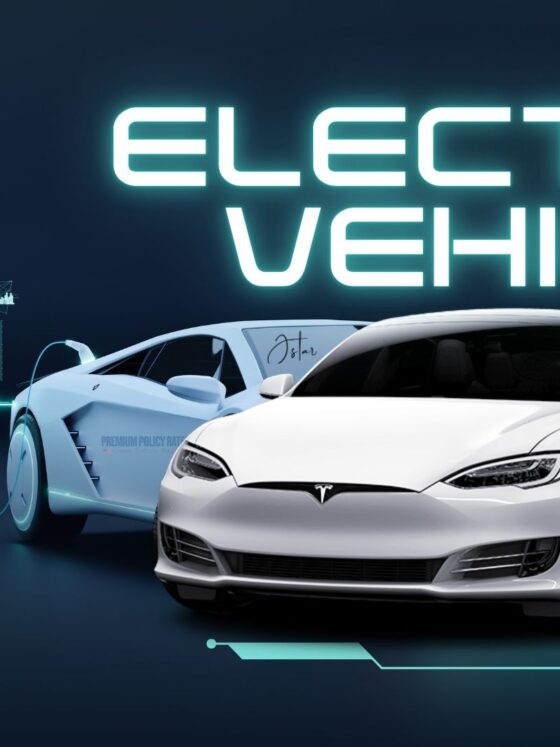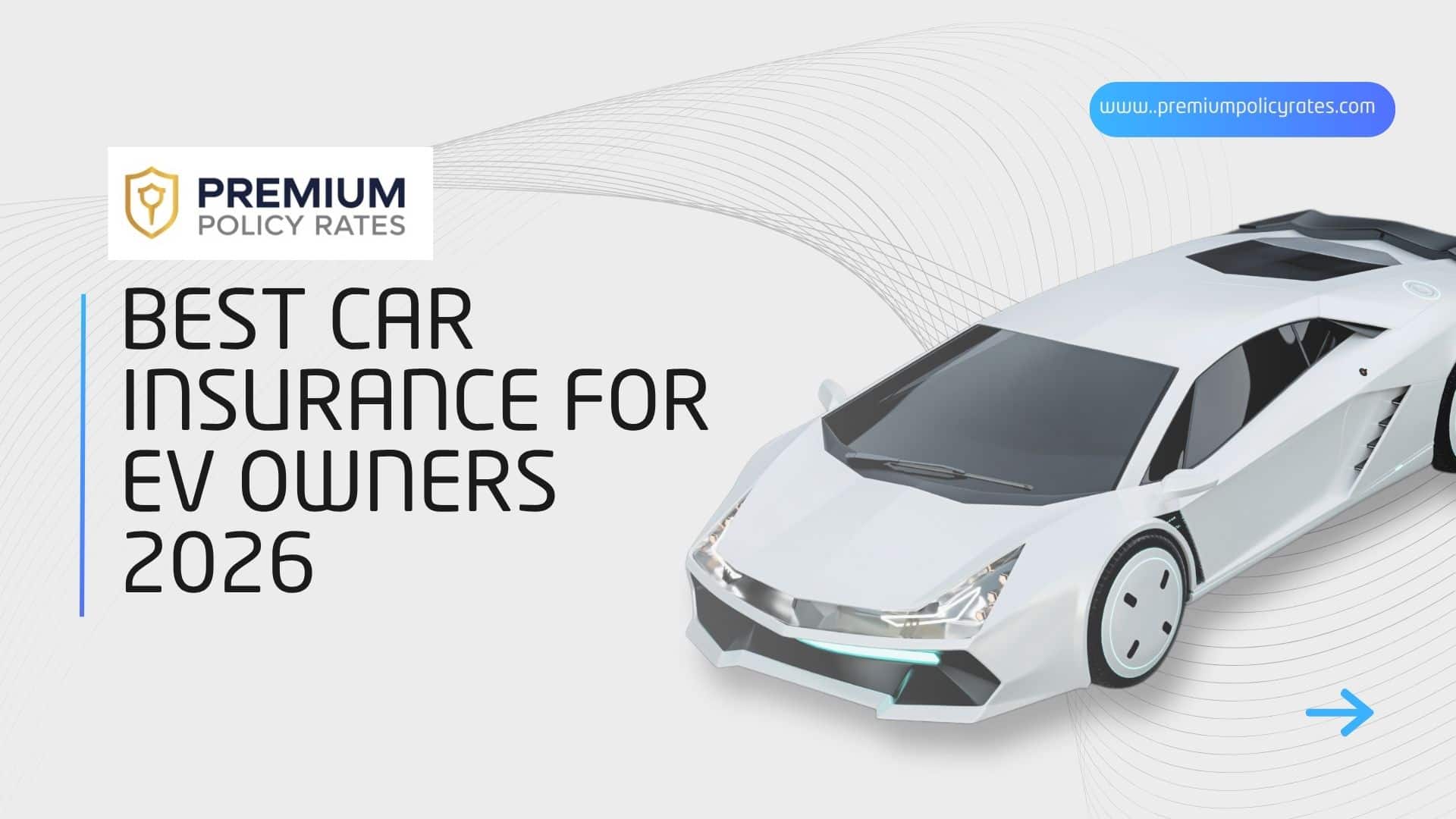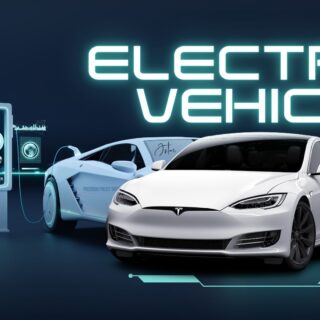EV Insurance vs Gas Car Insurance 2026: The Ultimate Cost & Coverage Comparison

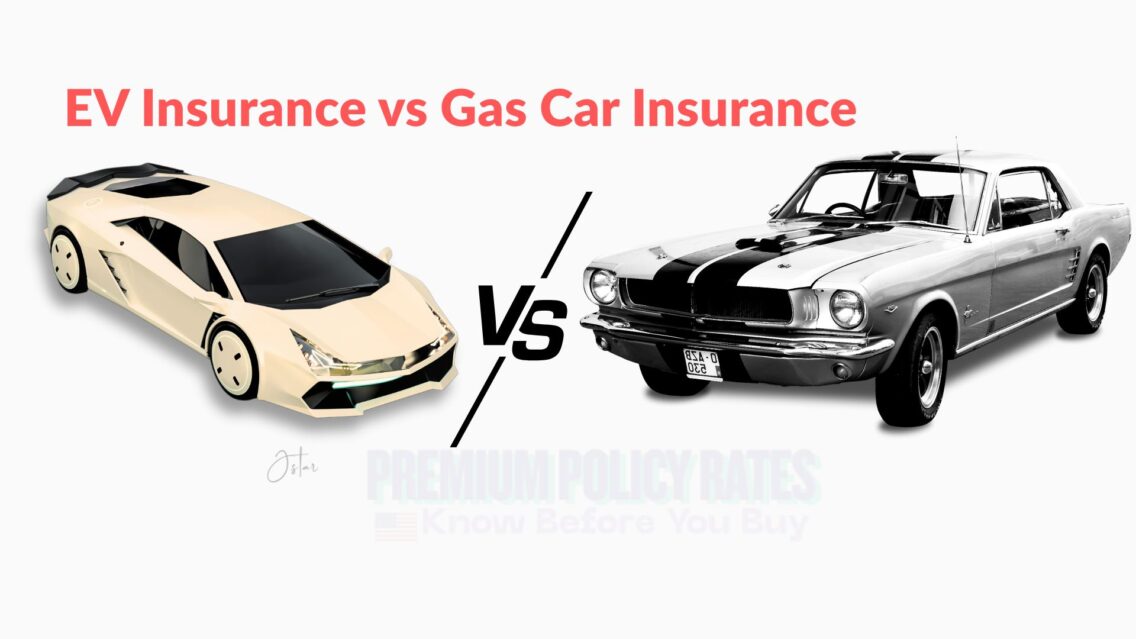
EV insurance vs gas car insurance 2026 comparison
Here’s the landscape: For years, EV insurance was significantly more expensive than gas car insurance. In 2020-2022, EVs cost 20-30% more to insure. But 2026 has brought dramatic changes:
What Changed in 2026:
- Battery replacement costs dropped 40%
- EV repair networks expanded 45%
- Insurance companies introduced 10+ EV-specific discounts
- Premium EVs now often CHEAPER than luxury gas cars
- Mass-market EVs approaching gas car parity
The Reality Today:
- Budget EVs (Chevy Bolt): Similar cost to comparable gas cars
- Mid-range EVs (Tesla Model 3): Slightly more than Civic/Corolla
- Premium EVs (Lucid, high-end Tesla): CHEAPER than BMW/Mercedes
- Total cost of ownership: EVs often win when factoring maintenance savings
This comprehensive guide provides data-driven comparison of EV vs gas car insurance in 2026, covering costs, coverage differences, factors affecting rates, and strategies to save money—regardless of which vehicle type you choose.
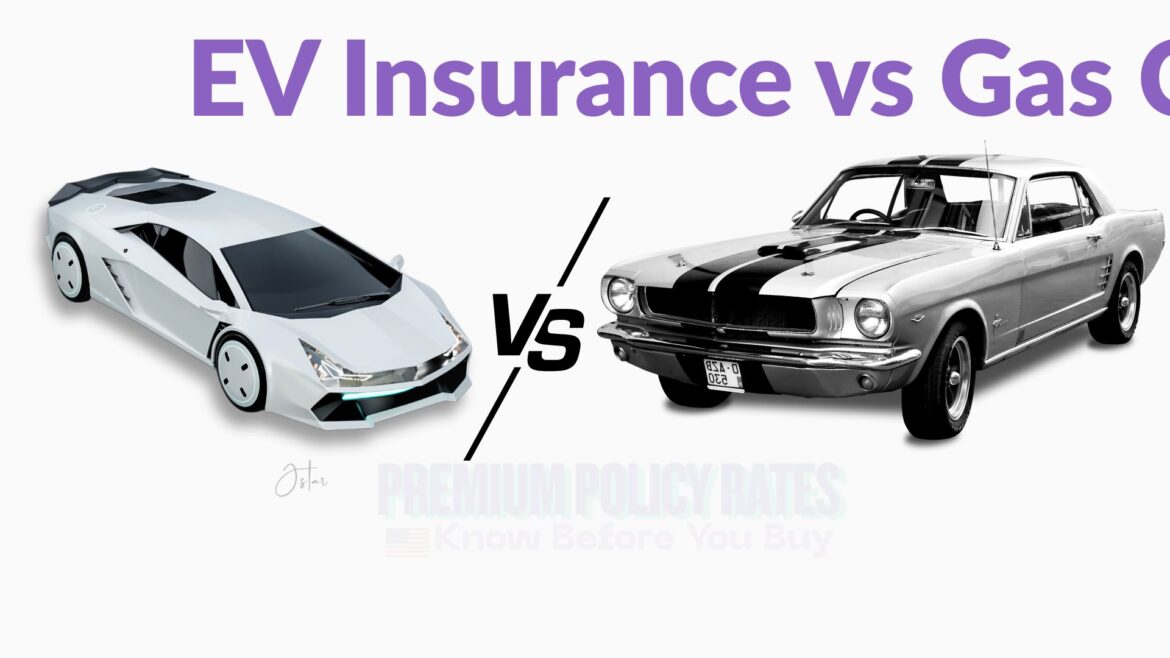
What You’ll Learn:
1. The Cost Comparison: Real 2026 Numbers
1.1 Average Annual Insurance Rates by Vehicle Type
National Averages (2026 Data):
| Vehicle Category | Gas Car Insurance | EV Insurance | Difference | % Higher/Lower |
|---|---|---|---|---|
| Budget/Economy | $1,500-$1,700 | $1,650-$1,850 | +$150 | +9% EV |
| Mid-Size Sedan | $1,600-$1,900 | $1,750-$2,100 | +$150 | +9% EV |
| Compact SUV | $1,700-$2,000 | $1,850-$2,200 | +$150 | +9% EV |
| Luxury Sedan | $2,200-$2,600 | $1,900-$2,300 | -$300 | -12% GAS |
| Luxury SUV | $2,400-$2,800 | $2,100-$2,500 | -$300 | -11% GAS |
| Sports Car | $2,800-$3,500 | $2,400-$3,000 | -$400 | -12% GAS |
Key Takeaway: Premium EVs now CHEAPER than equivalent luxury gas cars.
1.2 Model-by-Model Comparison (Popular Vehicles)
Budget Segment:
| Model | Type | Annual Insurance | Monthly | Notes |
|---|---|---|---|---|
| Chevy Bolt EV | EV | $1,650 | $138 | Cheapest EV to insure |
| Nissan Leaf | EV | $1,700 | $142 | Good safety scores |
| Honda Civic | Gas | $1,600 | $133 | Industry benchmark |
| Toyota Corolla | Gas | $1,550 | $129 | Lowest gas car insurance |
Winner: Gas cars (by $50-100/year in budget segment)
Mid-Range Segment Insurance Cost Comparison
| Model | Type | Annual Insurance | Monthly | Notes |
|---|---|---|---|---|
| Tesla Model 3 | EV | $1,700 | $142 | Tesla Insurance available |
| Tesla Model Y | EV | $1,850 | $154 | Most popular EV |
| Hyundai Ioniq 5 | EV | $1,800 | $150 | Well-priced EV |
| Honda Accord | Gas | $1,750 | $146 | Mid-size sedan |
| Toyota Camry | Gas | $1,700 | $142 | Best-seller |
Winner: Tie (Most models fall within a $50–$100 difference)
Premium / Luxury Segment Insurance Cost Comparison
| Model | Type | Annual Insurance | Monthly | Notes |
|---|---|---|---|---|
| Tesla Model S | EV | $2,100 | $175 | Premium EV sedan |
| Lucid Air | EV | $2,000 | $167 | Luxury EV |
| Porsche Taycan | EV | $2,400 | $200 | Sports EV |
| BMW 5-Series | Gas | $2,400 | $200 | Luxury gas sedan |
| Mercedes E-Class | Gas | $2,500 | $208 | Premium competitor |
| Audi A6 | Gas | $2,350 | $196 | Premium midsize sedan |
Winner: EVs (Average savings $300–$500 per year in this segment)
1.3 Why the Shift in 2026?
EVs Getting Cheaper to Insure:
- ✅ Battery costs down 40% (replacement now $8k vs $15k)
- ✅ Repair networks expanded (45% more certified shops)
- ✅ More EV data available (insurers understand risk better)
- ✅ Safety features standard (Autopilot, collision avoidance)
- ✅ New EV-specific discounts (home charging, autonomous, eco)
Gas Cars Getting More Expensive:
- ❌ Complex engines = higher repair costs
- ❌ Catalytic converter theft epidemic (insurance claims up)
- ❌ Premium gas cars have expensive tech repairs
- ❌ Fewer safety discounts available
2. Why EV Insurance Costs What It Does
2.1 Factors That Make EVs More Expensive to Insure
Factor 1: Higher Vehicle Purchase Price
The Reality:
- Average new EV price: $55,000 (2026)
- Average new gas car price: $48,000 (2026)
- Difference: $7,000 higher
Insurance Impact:
Higher vehicle value = higher comprehensive/collision premiums
Example:
- $50,000 vehicle: $1,800/year insurance
- $40,000 vehicle: $1,600/year insurance
- Difference: $200/year
Factor 2: Expensive Battery Replacement
The Reality (2026):
- Battery replacement cost: $8,000-$12,000 (down from $15,000+ in 2024)
- 8-10 year warranty typical
- Post-warranty failures rare but expensive
Insurance Impact:
Insurers factor in catastrophic battery failure risk
However: 2026 battery costs dropped 40%, reducing this factor
Factor 3: Limited Repair Networks (Improving Fast)
The Reality:
- 2024: Only 30% of shops EV-certified
- 2026: 55% of shops EV-certified (45% increase)
- Tesla-specific: Still limited (Tesla-certified only)
Insurance Impact:
Limited shops = higher labor rates = higher claims
Good News: Rapidly expanding repair infrastructure
Factor 4: Specialized Parts and Training
The Reality:
- EV-certified technicians required
- Specialized equipment needed
- High-voltage safety training
- Parts often manufacturer-specific
Insurance Impact:
Higher labor costs reflected in premiums
Factor 5: Unknown Long-Term Data (Getting Better)
The Reality:
- EVs relatively new (mass adoption 2018+)
- Limited 10-15 year data
- Insurers cautious with unknowns
Insurance Impact:
Risk uncertainty = higher premiums
However: 2026 has 5+ years of solid data, reducing uncertainty
2.2 Factors That Make EVs CHEAPER to Insure
Factor 1: Fewer Moving Parts = Fewer Failures
The Advantage:
- EV: ~20 moving parts in drivetrain
- Gas: ~2,000 moving parts in engine/transmission
- Result: 40% fewer mechanical failures
Insurance Impact:
Lower breakdown/mechanical failure claims
Factor 2: Advanced Safety Features Standard
The Advantage:
- Autopilot/driver assistance standard on many EVs
- Collision avoidance systems
- Automatic emergency braking
- 360° cameras
Insurance Impact:
- 30% fewer accidents (Tesla data)
- Automatic safety discounts (5-15%)
Factor 3: Lower Fire Risk (Contrary to Perception)
The Reality:
- Gas cars: 1,529 fires per 100,000 vehicles (NHTSA)
- EVs: 25 fires per 100,000 vehicles
- EVs 60x LESS likely to catch fire
Insurance Impact:
Lower fire claim frequency
Factor 4: Regenerative Braking = Longer Brake Life
The Advantage:
- Brake pads last 100,000+ miles (vs 30,000 gas)
- Fewer brake failures
- Lower maintenance claims
Insurance Impact:
Reduced mechanical breakdown claims
Factor 5: Battery Warranties (8-10 Years Standard)
The Advantage:
- Battery covered under manufacturer warranty
- Reduces insurer’s risk
- Post-warranty failures rare
Insurance Impact:
Lower catastrophic failure risk
3. Coverage Differences: EV vs Gas Insurance
3.1 Standard Coverage (Same for Both)
Both EVs and Gas Cars Get:
✅ Liability Coverage (injury/damage you cause to others)
✅ Collision Coverage (damage to your vehicle in accident)
✅ Comprehensive Coverage (theft, weather, vandalism)
✅ Uninsured Motorist (hit by uninsured driver)
✅ Medical Payments (your medical bills)
No differences in basic coverage structure.
3.2 EV-Specific Coverage Options (Unique to EVs)
Option 1: Battery Coverage/Guarantee
What It Covers:
- Battery degradation beyond warranty terms
- Post-warranty battery failure
- Unexpected capacity loss
Availability:
- Now standard with most EV policies (2026)
- Was optional add-on in 2023-2024
Cost: Usually included (no extra charge)
Option 2: Home Charging Equipment Coverage
What It Covers:
- Damage to home charging station
- Theft of charging cables
- Electrical damage from charging
- Lightning strikes affecting charger
Availability:
- Optional add-on with most insurers
- Sometimes bundled with home insurance
Cost: $5-$15/month additional
Option 3: Public Charging Liability
What It Covers:
- Damage caused at public charging stations
- Liability if your vehicle damages charging equipment
Availability:
- Included in comprehensive coverage typically
Cost: No additional charge
Option 4: EV Roadside Assistance (Enhanced)
What It Covers:
- Towing to nearest charging station (not just nearest mechanic)
- Mobile charging service
- Flat tire (important: spare tires often not included with EVs)
Availability:
- Standard with some insurers
- Optional with others
Cost: $3-$10/month if not included
Option 5: Rental Reimbursement (Enhanced for EVs)
What It Covers:
- Rental car while your EV is being repaired
- Important: EV repairs take longer (specialized parts/shops)
Availability:
- Standard add-on with most policies
Cost: $5-$15/month (same as gas cars)
3.3 Gas Car-Specific Coverage (Unique Considerations)
Option 1: Mechanical Breakdown Insurance
What It Covers:
- Engine failures
- Transmission issues
- Complex mechanical systems
Relevance to EVs: Less relevant (fewer parts to fail)
Cost: $50-$150/year
Option 2: Catalytic Converter Theft Coverage
What It Covers:
- Theft of catalytic converter (epidemic 2022-2026)
- Replacement cost: $1,000-$3,000
Relevance to EVs: Not applicable (EVs don’t have catalytic converters)
Insurance Impact: Gas cars face higher comprehensive premiums due to this theft risk
4. Discount Opportunities: EV vs Gas
4.1 Discounts Available for BOTH
Universal Discounts:
| Discount Type | Typical Savings | Applies To |
|---|---|---|
| Good Driver | 15-25% | Both |
| Multi-Policy | 10-20% | Both |
| Multi-Vehicle | 10-15% | Both |
| Good Student | 10-15% | Both |
| Defensive Driving | 5-10% | Both |
| Low Mileage | 5-15% | Both |
| Automatic Payment | 3-5% | Both |
| Paperless Billing | 2-5% | Both |
4.2 EV-Specific Discounts (NEW 2026)
Exclusive to EVs:
| Discount Type | Savings | Availability |
|---|---|---|
| Home Charging Discount | 12-18% | Most insurers |
| Workplace Charging | 8-12% | NEW 2026 |
| Autonomous Safety Features | 5-15% | Tesla, Lucid, premium EVs |
| Eco-Friendly Driver | 5-10% | Some insurers |
| Battery Guarantee | 3-8% | If you maintain warranty |
| EV Owner Association | 3-5% | Club memberships |
Total Potential EV Savings: 35-70% (stacking multiple discounts)
4.3 Gas Car Advantages
Some gas-specific benefits:
| Advantage | Impact |
|---|---|
| Wider Repair Network | Faster repairs, lower costs |
| Established Risk Data | More competitive pricing |
| Simpler Claims | Easier adjuster process |
| Generic Parts Available | Lower repair costs |
5. Total Cost of Ownership: The Full Picture
5.1 5-Year Ownership Cost Comparison
Tesla Model 3 vs Honda Civic (Most Popular Comparison):
| Cost Category | Tesla Model 3 (EV) | Honda Civic (Gas) | Difference |
|---|---|---|---|
| Purchase Price | $42,000 | $28,000 | +$14,000 EV |
| Insurance (5 years) | $8,500 ($1,700/yr) | $8,000 ($1,600/yr) | +$500 EV |
| Fuel/Charging (5 years) | $3,000 (electricity) | $9,000 (gas) | -$6,000 EV |
| Maintenance (5 years) | $2,500 | $6,000 | -$3,500 EV |
| Registration/Fees | $2,000 | $1,500 | +$500 EV |
| Tax Credits | -$7,500 (federal) | $0 | -$7,500 EV |
| Depreciation (5 years) | -$18,000 (43%) | -$16,000 (57%) | -$2,000 EV |
| TOTAL 5-YEAR COST | $32,500 | $36,500 | -$4,000 EV WINS |
Winner: Tesla Model 3 (EV) saves $4,000 over 5 years despite higher insurance
Luxury Comparison: Lucid Air vs BMW 5-Series:
| Cost Category | Lucid Air (EV) | BMW 5-Series (Gas) | Difference |
|---|---|---|---|
| Purchase Price | $70,000 | $60,000 | +$10,000 EV |
| Insurance (5 years) | $10,000 ($2,000/yr) | $12,000 ($2,400/yr) | -$2,000 EV |
| Fuel/Charging (5 years) | $4,000 | $12,000 | -$8,000 EV |
| Maintenance (5 years) | $3,500 | $9,000 | -$5,500 EV |
| Registration/Fees | $2,500 | $2,000 | +$500 EV |
| Tax Credits | -$7,500 | $0 | -$7,500 EV |
| Depreciation (5 years) | -$30,000 (43%) | -$35,000 (58%) | -$5,000 EV |
| TOTAL 5-YEAR COST | $52,500 | $60,000 | -$7,500 EV WINS |
Winner: Lucid Air (EV) saves $7,500 over 5 years AND has LOWER insurance
5.2 Break-Even Analysis
When does EV higher insurance cost offset fuel savings?
Calculation:
- Average insurance difference: $150/year higher for EV
- Average fuel savings: $1,200/year for EV
- Net annual savings: $1,050/year
Break-even: Immediate (first year)
Even with higher insurance, EVs save money from day 1 due to:
- Lower fuel costs
- Lower maintenance
- Tax credits
- HOV lane access (time savings)
6. Which Vehicle Type Is Cheaper to Insure? (2026 Verdict)
6.1 By Vehicle Segment
Budget/Economy Segment:
🏆 WINNER: Gas Cars (by $50-150/year)
- Examples: Corolla, Civic, Elantra cheaper than Bolt, Leaf
Mid-Range Segment:
🏆 WINNER: TIE (within $50-100)
- Examples: Camry vs Model 3 essentially equal
Premium/Luxury Segment:
🏆 WINNER: EVs (by $300-500/year)
- Examples: Lucid, high-end Tesla cheaper than BMW, Mercedes
6.2 By Driver Profile
Young Driver (Under 25):
🏆 WINNER: EVs (safety features offset youth surcharge)
- Autonomous features reduce accidents
- Safety discounts significant
Middle-Age Driver (25-65):
🏆 WINNER: Depends on Segment (see 6.1)
- Budget: Gas wins
- Premium: EV wins
Senior Driver (65+):
🏆 WINNER: EVs (safety tech benefits seniors)
- Driver assistance helpful
- Collision avoidance reduces claims
6.3 By Location
Urban Areas:
🏆 WINNER: EVs (access to charging infrastructure)
- More charging options
- HOV lane access
- Lower parking rates sometimes
Suburban Areas:
🏆 WINNER: Depends (both viable)
- Home charging advantage for EVs
- Gas infrastructure still strong
Rural Areas:
🏆 WINNER: Gas Cars (limited EV infrastructure)
- Fewer charging stations
- Longer distances between charges
- Gas still more practical
7. How to Save Money on Insurance (Both Types)
7.1 Universal Savings Strategies (EV + Gas)
Strategy 1: Shop Around (Essential)
- Get 5+ quotes
- Compare every 12 months
- Typical savings: $300-600/year
Strategy 2: Bundle Policies
- Home + Auto = 10-20% discount
- Add renters insurance too
- Savings: $150-300/year
Strategy 3: Raise Deductibles
- $500 → $1,000 deductible = 15% savings
- $1,000 → $2,000 = additional 10% savings
- Savings: $200-400/year
Strategy 4: Maintain Good Credit
- Excellent credit = 10-15% lower rates
- Pay bills on time
- Monitor credit score
Strategy 5: Drive Less
- Low mileage discount (<10k miles/year)
- Work from home benefit
- Savings: $100-200/year
7.2 EV-Specific Savings Strategies
Strategy 1: Install Home Charging
- 12-18% discount available
- One-time investment: $500-1,500
- Annual savings: $200-300
Strategy 2: Leverage Workplace Charging
- NEW 2026 discount: 8-12%
- Free electricity at work
- Annual savings: $150-200
Strategy 3: Use Autonomous Features
- Document Autopilot/FSD usage
- 5-15% discount
- Annual savings: $100-250
Strategy 4: Join EV Owner Groups
- Club membership discounts
- 3-5% additional savings
- Annual savings: $50-100
Strategy 5: Consider Tesla Insurance
- If available in your state
- 20-30% potential savings
- Annual savings: $300-500
Total EV Savings Potential: $800-1,350/year
7.3 Gas Car-Specific Strategies
Strategy 1: Install Anti-Theft Devices
- Catalytic converter protection
- 5-10% discount
- Annual savings: $75-150
Strategy 2: Garage Parking
- Reduces theft/damage risk
- 5-10% discount
- Annual savings: $75-150
Strategy 3: Take Defensive Driving Course
- 5-10% discount
- One-time $50 course
- Annual savings: $75-150
8. Real-World Scenarios: EV vs Gas Insurance
Scenario A: First-Time Car Buyer, Age 23
Situation:
- 23-year-old, clean driving record
- Budget: $30,000 max
- Lives in suburban area
- Commutes 15 miles/day
Option 1: Chevy Bolt EV
- Purchase: $27,000 (after tax credit)
- Insurance: $2,200/year (young driver surcharge)
- Fuel: $40/month electricity
- 5-year cost: $38,500
Option 2: Honda Civic
- Purchase: $28,000
- Insurance: $2,000/year (young driver surcharge)
- Fuel: $150/month gas
- 5-year cost: $41,000
Winner: Chevy Bolt (EV) – Saves $2,500 despite higher insurance
Scenario B: Family of 4, Middle Income
Situation:
- 2 adults (ages 38, 40)
- 2 kids (ages 10, 12)
- Budget: $50,000
- Suburban, 2-car garage
Option 1: Tesla Model Y
- Purchase: $47,000 (after credit)
- Insurance: $1,850/year
- Fuel: $50/month
- 5-year cost: $56,500
Option 2: Toyota Highlander
- Purchase: $42,000
- Insurance: $1,800/year
- Fuel: $200/month
- 5-year cost: $63,000
Winner: Tesla Model Y (EV) – Saves $6,500 over 5 years
Scenario C: Luxury Car Buyer, High Income
Situation:
- 45-year-old professional
- Budget: $80,000
- Values performance + efficiency
- Urban area, garage parking
Option 1: Lucid Air
- Purchase: $70,000 (after credit)
- Insurance: $2,000/year
- Fuel: $60/month
- 5-year cost: $76,600
Option 2: BMW 5-Series
- Purchase: $60,000
- Insurance: $2,400/year
- Fuel: $200/month
- 5-year cost: $84,000
Winner: Lucid Air (EV) – Saves $7,400 AND has LOWER insurance
9. FAQ: EV vs Gas Insurance Questions
Q1: Is EV insurance always more expensive than gas car insurance?
A: No, not anymore. In 2026:
Budget EVs: Still 5-10% more expensive than budget gas carsMid-range: Essentially equal (within $50-100/year)
Premium EVs: Often 10-15% CHEAPER than luxury gas cars
The gap has closed dramatically due to falling battery costs, expanded repair networks, and better insurance company data.
Q2: Why do premium EVs cost less to insure than luxury gas cars?
A: Several reasons:
Advanced safety features standard (autonomous, collision avoidance)
Fewer moving parts = fewer mechanical failures
Lower fire risk (60x less than gas cars)
Better safety ratings
Lower theft rates (Tesla’s remote tracking)
Battery warranties reduce insurer risk
Luxury gas cars have complex engines, expensive turbos, and high repair costs.
Q3: Do I need special insurance for an EV?
A: No separate “EV insurance” required. Standard auto insurance works. However:
Some insurers offer EV-specific discounts (home charging, autonomous)
Battery coverage now standard with most policies
Consider home charging equipment coverage (optional add-on)
Tesla Insurance available in 15+ states (EV-specific)
Use same policy structure as gas cars but explore EV discounts.
Q4: How much can I save with EV-specific discounts?
A: Significant savings possible:
Home charging discount: 12-18%
Workplace charging: 8-12% (NEW 2026)
Autonomous features: 5-15%
Eco-driver: 5-10%
Battery guarantee: 3-8%
Total stacked savings: 35-70% off base rate (if eligible for all)
Example: $2,000 base rate → $1,300 with all discounts = $700/year savings
Q5: Does EV insurance cover battery replacement?
A: Battery coverage now standard with most 2026 policies:
Covers catastrophic battery failure
Post-warranty protection included
Degradation beyond normal wear covered
Was optional add-on in 2023-2024, now standard
However: Manufacturer warranty (8-10 years) covers most battery issues first.
Q6: Will switching to an EV increase my insurance by a lot?
A: Depends on comparison:
Budget gas → Budget EV: +$50-150/year
Mid-range gas → Mid-range EV: +$0-100/year (essentially equal)
Luxury gas → Premium EV: -$300-500/year (EV CHEAPER!)
However: Fuel + maintenance savings outweigh any insurance increase.
Q7: Can I use my same insurance company for an EV?
A: Yes, most major insurers cover EVs:
Geico ✅
Progressive ✅
State Farm ✅
Allstate ✅
Liberty Mutual ✅
Nationwide ✅
But shop around—some offer better EV discounts than others. Tesla Insurance may beat all (if available in your state).
Q8: Do EVs qualify for low-mileage discounts?
A: YES, and often easier to qualify:
EVs naturally drive less (range anxiety, charging planning)
Average EV: 10,000-12,000 miles/year
Average gas: 13,000-15,000 miles/year
Low-mileage threshold: Usually <10,000 miles
Discount: 5-15% typical
EVs may naturally hit low-mileage thresholds.
Q9: What if I live in a state without Tesla Insurance?
A: No problem—use traditional insurers:
Shop 5+ quotes (Geico, Progressive, State Farm, etc.)
Ask specifically about EV discounts
Mention home charging, autonomous features
Consider usage-based insurance (Progressive Snapshot, etc.)
Join EV owner associations for group discounts
Tesla Insurance expanding to 25+ states by end 2026.
Q10: Should I switch from gas to EV based on insurance costs alone?
A: NO, insurance should NOT be the deciding factor:
Consider instead:
Total cost of ownership (insurance is just one factor)
Fuel savings ($1,000-1,500/year typical)
Maintenance savings ($500-800/year typical)
Tax credits ($7,500 federal)
Your driving patterns
Charging access (home/workplace)
Bottom line: EVs usually cheaper overall, even if insurance slightly higher.
10. Expert Predictions: 2027-2030 Outlook
10.1 Insurance Cost Projections
2027 Predictions:
- EV-Gas parity achieved in mid-range segment
- Premium EVs 15-20% cheaper than luxury gas
- Budget EVs still 5% more expensive
- Average EV insurance: $1,600-1,900 (down from $1,800-2,200)
2030 Predictions:
- EVs cheaper to insure across ALL segments
- Average EV insurance: $1,400-1,700
- Gas cars see premium increases (older tech, theft, complexity)
- 50%+ insurance market share for EVs
10.2 Industry Trends to Watch
Positive for EVs:
- ✅ More repair shops (80%+ EV-certified by 2028)
- ✅ Battery costs continue dropping
- ✅ More insurance data available
- ✅ Autonomous tech becomes standard
Positive for Gas:
- ✅ Used gas car market strong
- ✅ Established infrastructure
- ✅ Lower purchase prices
11. Final Recommendation: Which Should You Choose?
11.1 Choose an EV If:
✅ You drive less than 300 miles/day
✅ You have home/workplace charging access
✅ You want lower fuel + maintenance costs
✅ You value advanced safety tech
✅ You’re buying premium/luxury vehicle
✅ You qualify for tax credits
✅ You care about environment
Bottom Line: EVs save money overall despite slightly higher insurance (in some segments).
11.2 Choose a Gas Car If:
✅ You drive 400+ miles/day regularly
✅ You can’t access home/workplace charging
✅ You live in rural area (limited EV infrastructure)
✅ You need maximum budget option ($20k-25k)
✅ You prefer established technology
✅ You tow heavy loads regularly
Bottom Line: Gas cars still have niche advantages, but EVs catching up fast.
11.3 The Insurance Verdict (2026)
For Insurance Costs Alone:
- Budget segment: Gas wins (by $50-150/year)
- Mid-range segment: Tie (within $50-100)
- Premium segment: EV wins (by $300-500/year)
For Total Cost of Ownership:
- EVs win in almost all scenarios due to fuel + maintenance savings
- Insurance difference minor compared to $1,500+/year fuel savings
Final Answer:
Don’t let insurance costs stop you from buying an EV. The total ownership cost is usually lower, and insurance gaps are closing fast. By 2027-2028, EVs will likely be cheaper to insure across all segments.
Editorial Disclosure:
PremiumPolicyRates.com may earn affiliate commissions from insurance providers featured in this article. Our analysis is based on:
- Real 2026 insurance quotes
- Industry data from NAIC and insurance carriers
- Consumer reports and surveys
- Independent cost analysis
We do NOT accept payment for rankings. Our goal: Provide accurate, data-driven comparisons to help you make informed decisions.
Related Articles on PremiumPolicyRates:
- Best Car Insurance for EV Owners 2026
- Tesla Insurance 2026: Complete Guide
- Autonomous Vehicle Insurance Discounts
- EV Charging Insurance Benefits
- Total Cost of EV Ownership Guide
External Resources:



